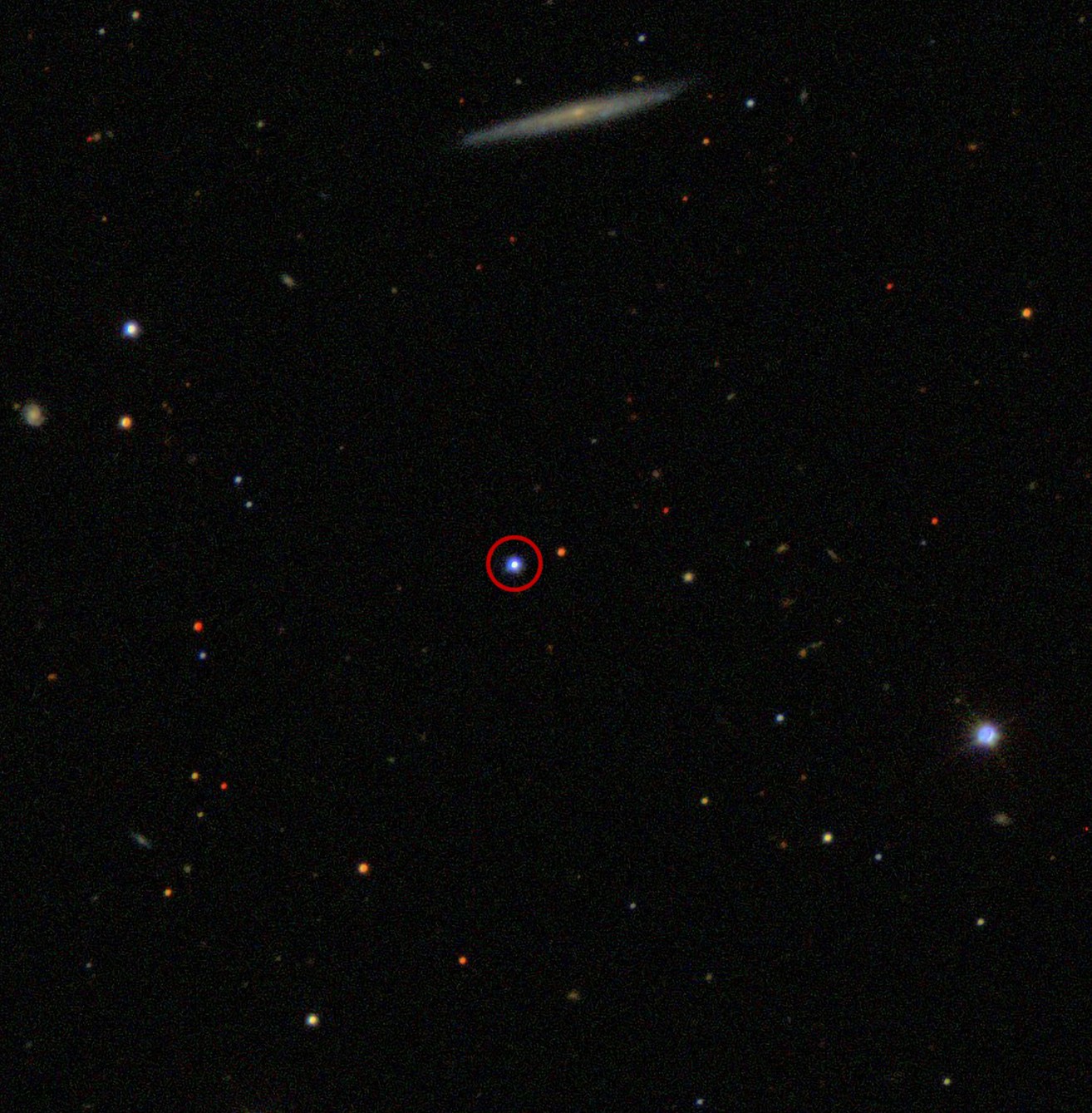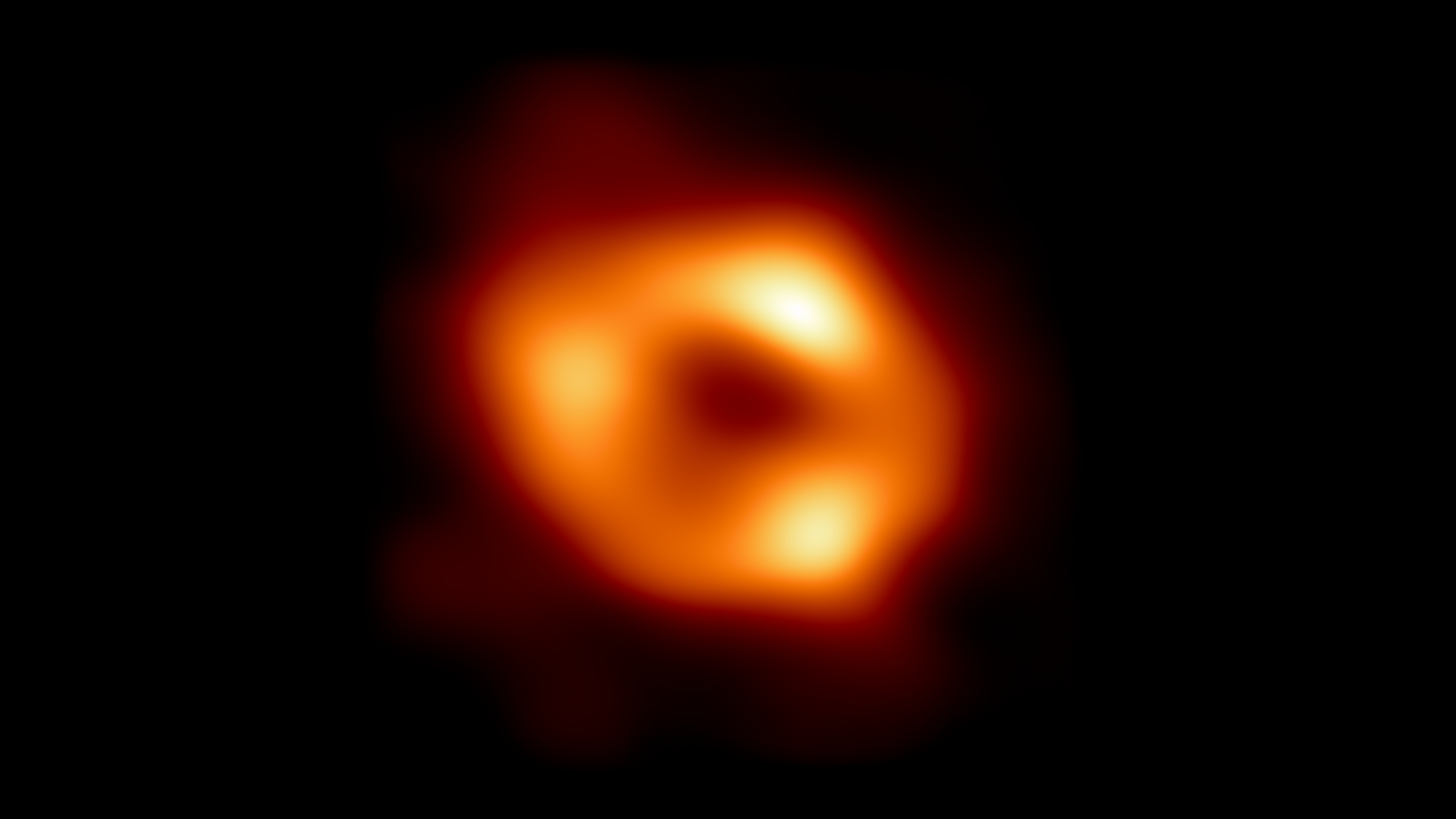What Is The Biggest Black Hole? Dive into the fascinating world of supermassive black holes with WHAT.EDU.VN and uncover the colossal giants lurking in the cosmos. We offer a detailed exploration of these cosmic behemoths, answering your questions and sparking your curiosity. Discover their size, location, and how they impact their galaxies with the help of free consultation. Get ready to explore the most massive black holes ever discovered, including TON 618, and understand the science behind these mind-boggling phenomena.
1. Understanding Black Holes: The Basics
1.1 What Defines a Black Hole?
A black hole is a region in spacetime exhibiting such strong gravitational effects that nothing – no particle or even electromagnetic radiation such as light – can escape from inside it. The theory of general relativity predicts that a sufficiently compact mass can deform spacetime to form a black hole. The boundary of the region from which no escape is possible is called the event horizon.
1.2 How Are Black Holes Formed?
Black holes are primarily formed through two main processes:
- Stellar Collapse: When massive stars reach the end of their life cycle, they undergo a supernova explosion. If the remaining core has sufficient mass, it collapses under its own gravity to form a black hole.
- Mergers of Smaller Black Holes: Over time, smaller black holes can merge with each other, gradually growing into larger ones.
1.3 Types of Black Holes: From Stellar to Supermassive
Black holes come in various sizes, categorized by their mass:
- Stellar Black Holes: These typically range from a few times to dozens of times the mass of our Sun.
- Intermediate-Mass Black Holes: Ranging from hundreds to thousands of solar masses, these are less common and their formation is still under investigation.
- Supermassive Black Holes (SMBHs): Found at the centers of most galaxies, SMBHs range from hundreds of thousands to billions of times the mass of our Sun.
2. Defining “Biggest”: Mass vs. Size
2.1 Mass: The Primary Measurement
When determining “the biggest” black hole, mass is the primary factor. Mass refers to the amount of matter contained within the black hole.
2.2 Size: The Event Horizon and Shadow
The size of a black hole is often described by its event horizon – the boundary beyond which nothing can escape. The shadow of a black hole, as seen in recent images, is about twice the size of the event horizon due to the bending of light around it.
2.3 Why Mass Matters More Than Size
While the size of the event horizon is related to mass, mass is the fundamental property that defines a black hole’s gravitational influence. A black hole with greater mass will exert a stronger gravitational pull on its surroundings.
3. The Current Record Holder: TON 618
3.1 Introducing TON 618
TON 618 is currently considered the largest known black hole in the observable universe. It is an ultramassive black hole located in the constellation Canes Venatici.
3.2 Estimated Mass and Size
TON 618 is estimated to have a mass of approximately 66 billion times the mass of our Sun. Its event horizon spans an astonishing diameter of roughly 390 billion kilometers. To put that in perspective, a beam of light would take weeks to cross it.
3.3 What Makes TON 618 So Massive?
TON 618’s extreme mass is likely the result of continuous accretion of matter over billions of years, possibly combined with mergers with other black holes.
4. Other Contenders for the Title
4.1 Phoenix A* Black Hole
The black hole at the center of the Phoenix Cluster, also known as Phoenix A*, is another strong contender. It has an estimated mass of around 100 billion solar masses, but this estimate is still under debate.
4.2 The Black Hole in NGC 1277
The supermassive black hole in the galaxy NGC 1277 has an estimated mass of about 17 billion solar masses, which is unusually large for the size of its host galaxy.
4.3 IC 1101’s Central Black Hole
The black hole at the center of the massive galaxy IC 1101 is estimated to have a mass of around 40-100 billion solar masses, making it another potential contender for the title.
5. How Astronomers Measure the Mass of Black Holes
5.1 Observing Stellar Orbits
One of the primary methods for measuring the mass of a black hole is by observing the orbits of stars and gas clouds around it. By applying Kepler’s laws of planetary motion, astronomers can calculate the mass of the central object.
5.2 Gas Dynamics and Accretion Disks
The dynamics of gas swirling around a black hole in an accretion disk provide valuable information. The speed and behavior of the gas can be used to estimate the black hole’s mass.
5.3 Gravitational Lensing
Gravitational lensing, where a massive object bends the light from a more distant object, can also be used to estimate the mass of a black hole.
6. The Role of Supermassive Black Holes in Galaxies
6.1 Central Engines of Galaxies
Supermassive black holes play a crucial role in the evolution and dynamics of galaxies. They act as central engines, influencing the behavior of stars, gas, and dust within their host galaxies.
6.2 Active Galactic Nuclei (AGN)
When supermassive black holes actively accrete matter, they can power active galactic nuclei (AGN). AGN are among the brightest objects in the universe, emitting vast amounts of energy across the electromagnetic spectrum.
6.3 Galaxy Formation and Evolution
The growth of supermassive black holes is closely linked to the formation and evolution of galaxies. The relationship between a black hole’s mass and the properties of its host galaxy suggests a co-evolutionary process.
7. The Event Horizon Telescope and Black Hole Imaging
7.1 The Breakthrough of the EHT
The Event Horizon Telescope (EHT) is a global network of radio telescopes that achieved a groundbreaking feat: capturing the first images of black holes.
7.2 Imaging M87* and Sagittarius A*
In 2019, the EHT released the first image of the supermassive black hole M87* at the center of the galaxy M87. In 2022, they followed up with the first image of Sagittarius A*, the black hole at the center of our Milky Way galaxy.
7.3 What the Images Reveal
The images reveal a bright ring of hot gas surrounding a dark central region – the black hole’s shadow. These images provide direct visual evidence of the existence of black holes and confirm predictions made by Einstein’s theory of general relativity.
8. Future Research and Discoveries
8.1 Advancements in Telescope Technology
Future advancements in telescope technology, such as the next generation of extremely large telescopes, will enable astronomers to probe black holes in greater detail.
8.2 Gravitational Wave Astronomy
Gravitational wave astronomy, with observatories like LIGO and future missions like LISA, will provide new insights into black hole mergers and the dynamics of spacetime.
8.3 Unveiling the Mysteries of Black Hole Formation
Ongoing research aims to unravel the mysteries of how supermassive black holes form and grow to such enormous sizes.
9. Black Holes in Popular Culture
9.1 Black Holes in Science Fiction
Black holes have captured the imagination of writers and filmmakers, appearing in numerous science fiction stories and movies.
9.2 The Science Behind the Fiction
While some depictions of black holes in fiction are highly speculative, many are based on real scientific concepts and theories.
9.3 Inspiring Scientific Curiosity
Black holes serve as a source of fascination and inspiration, driving scientific curiosity and inspiring the next generation of scientists and explorers.
10. The Importance of Studying Black Holes
10.1 Testing General Relativity
Black holes provide a unique laboratory for testing Einstein’s theory of general relativity in extreme conditions.
10.2 Understanding Galaxy Evolution
Studying black holes helps us understand the formation and evolution of galaxies, and the complex interplay between black holes and their host galaxies.
10.3 Exploring the Fundamental Laws of Physics
Black holes push the boundaries of our understanding of physics, challenging us to explore the fundamental laws that govern the universe.
11. Frequently Asked Questions (FAQs) about Black Holes
| Question | Answer |
|---|---|
| What happens if you fall into a black hole? | According to current scientific understanding, if you fall into a black hole, you would experience spaghettification, where the tidal forces stretch you out. Eventually, you would be torn apart at the atomic level and added to the black hole’s mass. |
| Can a black hole destroy Earth? | No, a black hole would need to be extremely close to Earth to pose a threat. Even if a black hole of several solar masses replaced the Sun, Earth would continue to orbit it, although in a much colder and darker environment. |
| Do black holes suck everything in? | Black holes do not “suck” everything in. They exert a gravitational force, and objects need to be within a certain distance to be pulled in. Objects outside this range can orbit black holes just as they orbit any other massive object. |
| Are black holes dangerous? | Black holes themselves are not inherently dangerous unless you get too close. The real danger comes from the extreme tidal forces and radiation emitted by the accretion disk surrounding them. |
| How many black holes are in the Milky Way? | Estimates vary, but scientists believe there could be as many as 100 million stellar black holes in the Milky Way. In addition, there is the supermassive black hole, Sagittarius A*, at the galaxy’s center. |
| What is the event horizon? | The event horizon is the boundary around a black hole beyond which nothing, not even light, can escape. It is the point of no return. Once something crosses the event horizon, it is forever trapped inside the black hole. |
| What is a singularity? | A singularity is the point at the center of a black hole where all the mass is concentrated. According to general relativity, the singularity has infinite density and zero volume. |
| Can black holes evaporate? | According to Stephen Hawking’s theory of Hawking radiation, black holes can slowly evaporate over extremely long periods. This process involves the emission of particles from just outside the event horizon, gradually reducing the black hole’s mass. |
| What are primordial black holes? | Primordial black holes are hypothetical black holes that may have formed in the early universe due to extreme density fluctuations shortly after the Big Bang. They could be much smaller than stellar black holes and might contribute to dark matter. |
| Why are black holes black? | Black holes appear black because they absorb all light that falls into them. Nothing, including light, can escape their gravitational pull, making them invisible to direct observation. We can only infer their presence through their effects on surrounding matter and spacetime. |


12. Conclusion: The Ever-Expanding Universe of Knowledge
The study of black holes is an ongoing journey of discovery, pushing the boundaries of our knowledge and challenging our understanding of the universe. From the colossal TON 618 to the mysteries of galaxy evolution, black holes continue to captivate and inspire.
Do you have more questions about black holes or other cosmic phenomena? Visit WHAT.EDU.VN to ask your questions and get free answers from experts. Our platform provides a convenient and accessible way to explore the wonders of the universe and expand your knowledge. Don’t hesitate to reach out and satisfy your curiosity. Contact us at 888 Question City Plaza, Seattle, WA 98101, United States. Whatsapp: +1 (206) 555-7890. Website: what.edu.vn.